C5a-regulated CCAAT/enhancer-binding proteins β and δ are essential in Fcγ receptor-mediated inflammatory cytokine and chemokine production in macrophages
- PMID: 22147692
- PMCID: PMC3270976
- DOI: 10.1074/jbc.M111.280834
C5a-regulated CCAAT/enhancer-binding proteins β and δ are essential in Fcγ receptor-mediated inflammatory cytokine and chemokine production in macrophages
Abstract
CCAAT/enhancer-binding protein β (C/EBPβ) and C/EBPδ are known to participate in the regulation of many genes associated with inflammation. However, little is known about the activation and function of C/EBPβ and -δ in inflammatory responses elicited by Fcγ receptor (FcγR) activation. Here we show that C/EBPβ and -δ activation are induced in IgG immune complex (IC)-treated macrophages. The increased expression of C/EBPβ and -δ occurred at both mRNA and protein levels. Furthermore, induction of C/EBPβ and -δ was mediated, to a large extent, by activating FcγRs. Using siRNA-mediated knockdown as well as macrophages deficient for C/EBPβ and/or -δ, we demonstrate that C/EBPβ and -δ play a critical role in the production of TNF-α, MIP-2, and MIP-1α in IgG IC-stimulated macrophages. Moreover, both ERK1/2 and p38 MAPK are involved in C/EBP induction and TNF-α, MIP-2, and MIP-1α production induced by IgG IC. We provide the evidence that C5a regulates IgG IC-induced inflammatory responses by enhancing ERK1/2 and p38 MAPK activities as well as C/EBPβ and -δ activities. Collectively, these data suggest that C/EBPβ and -δ are key regulators for FcγR-mediated induction of cytokines and chemokines in macrophages. Furthermore, C/EBPs may play an important regulatory role in IC-associated inflammatory responses.
Figures
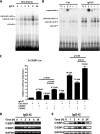

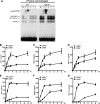

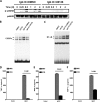
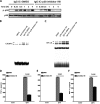
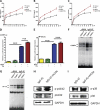
Similar articles
-
Suppressors of cytokine signaling 3 is essential for FcγR-mediated inflammatory response via enhancing CCAAT/enhancer-binding protein δ transcriptional activity in macrophages.Exp Cell Res. 2015 Sep 10;337(1):120-7. doi: 10.1016/j.yexcr.2015.07.017. Epub 2015 Jul 21. Exp Cell Res. 2015. PMID: 26209606 Free PMC article.
-
Critical role for CCAAT/enhancer-binding protein β in immune complex-induced acute lung injury.J Immunol. 2012 Aug 1;189(3):1480-90. doi: 10.4049/jimmunol.1200877. Epub 2012 Jun 25. J Immunol. 2012. PMID: 22732594 Free PMC article.
-
CCAAT/enhancer-binding protein δ is a critical mediator of lipopolysaccharide-induced acute lung injury.Am J Pathol. 2013 Feb;182(2):420-30. doi: 10.1016/j.ajpath.2012.10.013. Epub 2012 Nov 21. Am J Pathol. 2013. PMID: 23177475 Free PMC article.
-
C/EBPβ and C/EBPδ transcription factors: Basic biology and roles in the CNS.Prog Neurobiol. 2015 Sep;132:1-33. doi: 10.1016/j.pneurobio.2015.06.003. Epub 2015 Jul 2. Prog Neurobiol. 2015. PMID: 26143335 Review.
-
CCAAT/enhancer-binding proteins and the pathogenesis of retrovirus infection.Future Microbiol. 2009 Apr;4(3):299-321. doi: 10.2217/fmb.09.4. Future Microbiol. 2009. PMID: 19327116 Free PMC article. Review.
Cited by
-
Detrimental role for CCAAT/enhancer binding protein δ in blood-borne brain infection.BMC Infect Dis. 2016 Nov 11;16(1):670. doi: 10.1186/s12879-016-1963-7. BMC Infect Dis. 2016. PMID: 27835970 Free PMC article.
-
The Crucial Role of PPARγ-Egr-1-Pro-Inflammatory Mediators Axis in IgG Immune Complex-Induced Acute Lung Injury.Front Immunol. 2021 Feb 25;12:634889. doi: 10.3389/fimmu.2021.634889. eCollection 2021. Front Immunol. 2021. PMID: 33717177 Free PMC article.
-
CCAAT enhancer binding protein and nuclear factor of activated T cells regulate HIV-1 LTR via a novel conserved downstream site in cells of the monocyte-macrophage lineage.PLoS One. 2014 Feb 14;9(2):e88116. doi: 10.1371/journal.pone.0088116. eCollection 2014. PLoS One. 2014. PMID: 24551078 Free PMC article.
-
Identification of new genes involved in human adipogenesis and fat storage.PLoS One. 2012;7(2):e31193. doi: 10.1371/journal.pone.0031193. Epub 2012 Feb 27. PLoS One. 2012. PMID: 22384002 Free PMC article.
-
Identification of Regulatory Factors and Prognostic Markers in Amyotrophic Lateral Sclerosis.Antioxidants (Basel). 2022 Feb 1;11(2):303. doi: 10.3390/antiox11020303. Antioxidants (Basel). 2022. PMID: 35204186 Free PMC article.
References
-
- Nimmerjahn F., Ravetch J. V. (2008) Fcγ receptors as regulators of immune responses. Nat. Rev. Immunol. 8, 34–47 - PubMed
-
- Fernández N., Renedo M., García-Rodríguez C., Sánchez Crespo M. (2002) Activation of monocytic cells through Fc γ receptors induces the expression of macrophage-inflammatory protein (MIP)-1 α, MIP-1 β, and RANTES. J. Immunol. 169, 3321–3328 - PubMed
-
- Gao H., Neff T., Ward P. A. (2006) Regulation of lung inflammation in the model of IgG immune-complex injury. Annu. Rev. Pathol. 1, 215–242 - PubMed
-
- Bayón Y., Alonso A., Sánchez Crespo M. (1997) Stimulation of Fc γ receptors in rat peritoneal macrophages induces the expression of nitric oxide synthase and chemokines by mechanisms showing different sensitivities to antioxidants and nitric oxide donors. J. Immunol. 159, 887–894 - PubMed
Publication types
MeSH terms
Substances
Grants and funding
LinkOut - more resources
Full Text Sources
Miscellaneous

